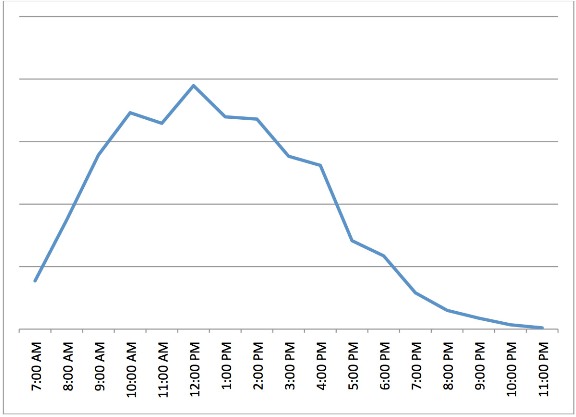Task One Academic: Time Expressions
You should do this exercise after you have done Task One Academic: Language of Graphs.
It is likely that if you have to describe a graph in IELTS, you will have to talk about periods of time. As with all aspects of IELTS, it is important to have a variety of expressions that you can use so that you don't repeat vocabulary.
Look at the examples below:
- From 8am to 10am, visits rose dramatically.
- Between January and March, there was a significant drop in sales.
- Throughout the whole period, sales rose steadily.
- In 1995, sales stood at 20,000.
- The 1992 to 1996 period saw a sharp drop in sales.
- Over a five hour period, visits remained stable.
- From that point, sales started to increase.
- Over the following/next six months, sales levelled off.
It is also very important to be careful with the tenses you use. Look carefully at the times on the graph - are they all in the past? Does it start in the past and move to the future? Does it include now?
Remember:
- If the whole graph is in the past, you will only use the past simple. (see the examples above)
- If the graph continues to the present day, you will need to use the present perfect for that period. For example, 'Since 2010, sales have increased moderately.'
- If the graph continues into the future, you can use the following expressions:
- It is predicted that... (sales will continue to rise)
- It is thought that... (sales will continue to rise)
- Sales are predicted to (rise)
You may be required to use a mixture of all of the above.
TASK
Look at the line graph below. Describe parts of the graph using all the expressions from above.

Image from Georgia State University library